
Atomic bombing of Hiroshima on August 06, 1945
Atomic bombing of Hiroshima: On the morning of August 6, 1945, during World War II (1939-45), an American B-29 Boeing Superfortress bomber dropped the world’s first deployed atomic bomb over the Japanese city of Hiroshima.
The explosion immediately killed an estimated 80,000 people; tens of thousands more would later die of radiation exposure.
By July 1945, Germany had surrendered, and the war in Europe was over.
Japan, however, refused to submit to the terms outlined in the Allies’ Potsdam Declaration.
It appeared to American leaders that the only way to compel Japan’s unconditional surrender was to invade and conquer the Japanese home islands.
Although an estimated 300,000 Japanese civilians had already died from starvation and bombing raids, Japan’s government showed no sign of capitulation.
Instead, American intelligence intercepts revealed that by August 2, Japan had already deployed more than 560,000 soldiers and thousands of suicide planes and boats on the island of Kyushu to meet the expected American invasion of Japan.
Additional reports correctly surmised that the Japanese military intended to execute all American prisoners in Japan in the event of an Allied landing. These frightening figures portended a costlier battle for the United States than any previously fought during the war.
By comparison, U.S. forces suffered 49,000 casualties, including 12,000 men killed in action, when facing less than 120,000 Japanese soldiers during the battle for the island of Okinawa from April to June of 1945.
At least 110,000 Japanese soldiers and more than 100,000 Okinawan civilians, a third of the island’s prewar population, also perished in the campaign. American casualties on Okinawa weighed heavily on the minds of American planners who looked ahead to the invasion of Japan.
Japan’s leaders hoped to prevail, not by defeating American forces, but by inflicting massive casualties and thereby breaking the resolve of the American public.
This was the situation that confronted American President Harry S. Truman in the summer of 1945 when he authorized the use of the world’s first atomic bomb. In light of intelligence reports about Japan’s commitment to continue fighting, Truman and his military advisors were determined to use every weapon at their disposal in order to bring the war to an immediate end. Consequently, neither Truman nor any of his advisors ever debated if the atomic bombs should be used, only how and where they should be used.
In the spring of 1945, the American government convened a committee of scientists and military officers to determine how best to use the bombs. This group unanimously declared that there was no guarantee that demonstrating the bombs to the Japanese in a deserted area would convince Japanese leaders to surrender. It was vital that Japan be convinced to surrender as fast as possible because the United States had just two atomic bombs available in July 1945 and additional weapons would not be ready to deploy for several more weeks. Meanwhile, thousands of Chinese, American, and Japanese soldiers continued to die each day the war continued.
Consequently, Truman approved the long-standing plans for the U.S. Army Air Force to drop atomic bombs on a list of preselected Japanese cities.
The list of targets excluded Tokyo and Kyoto because of their political and historic importance.
Instead, the intended target of the first bomb was Hiroshima, a fan-shaped city of approximately 550,000 people that occupied the estuary of the Ota River. The city was also home to the headquarters of the Japanese army that defended the island of Kyushu as well as a number of war industries.
At 2:45 a.m. on Monday August 6, 1945, three American B-29 bombers of the 509th Composite Group took off from an airfield on the Pacific island of Tinian, 1,500 miles south of Japan.
Colonel Paul Tibbets piloted the lead bomber, “Enola Gay”, which carried a nuclear bomb nicknamed “Little Boy”.
Despite the bomb’s moniker, it weighed nearly 10,000 pounds. As a result, the overloaded Enola Gay used more than two miles of runway to get aloft.
At 7:15 a.m., the bomber crew armed the bomb, and the plane began its ascent to the bombing altitude of 31,000 feet.

Meanwhile, in Hiroshima, Reverend Kiyoshi Tanimoto awoke at 5 a.m. Hiroshima time, which was an hour behind Tinian time. Tanimoto was the pastor of the Hiroshima Methodist Church, and “a small man, quick to talk, laugh, and cry”. Tanimoto was a thoughtful and cautious man who had sent his wife and baby to the relative safety of a northern suburb. Tanimoto remained in the city to remove the transportable objects in his church to the safety of a suburban estate. He had slept poorly because of several air raid warnings the previous night.
Hiroshima had not yet endured an American bombing raid, but its good fortune was not expected to last. That morning, Tanimoto had agreed to help a friend move a large armoire filled with clothes out to the suburbs. As the two men trundled the piece of furniture through the streets, they heard an air raid siren go off. The alarm sounded every morning when American weather planes flew overhead, so the men were not particularly worried. They continued on with their handcart through the city streets. When the pair reached their destination, “there was no sound of planes. The morning was still; the place was cool and pleasant”.
At 9:14 a.m. Hiroshima time, the Enola Gay arrived over the city. The Aioi Bridge, which bombardier Thomas Ferebee used as an aiming point, was clearly visible through the plane’s bombsight. Ferebee took control of the bomber and opened the bomb bay doors. Just after 9:15 a.m., Ferebee released “Little Boy” from its restraints and the bomb fell away from the Enola Gay.
The plane jumped nearly 10 feet at the sudden loss in weight. Tibbets immediately resumed control of the plane and banked it sharply on a 155 degree turn. He had practiced this difficult maneuver for months because he had been instructed that he had less than 45 seconds to get his plane clear of the subsequent explosion. Not even the scientists who designed the bomb were sure if the Enola Gay would survive the shock waves from the blast.
“Little Boy” fell almost six miles in 43 seconds before detonating at an altitude of 2,000 feet. The bomb exploded with the force of more than 15,000 tons of TNT directly over a surgical clinic, 500 feet from the Aioi Bridge. Less than two percent of the bomb’s uranium achieved fission, but the resulting reaction engulfed the city in a blinding flash of heat and light. The temperature at ground level reached 7,000 degrees Fahrenheit in less than a second. The bomb vaporized people half a mile away from ground zero. Bronze statues melted, roof tiles fused together, and the exposed skin of people miles away burned from the intense infrared energy unleashed. At least 80,000 people died instantly.
Reverend Tanimoto saw “a tremendous flash of light cut across the sky… from east to west, from the city toward the hills. It seemed a sheet of sun.” Because Tanimoto was two miles from the epicenter of the explosion, he had a few seconds to throw himself between two large rocks in the garden of his friend’s house. “He felt a sudden pressure, and then splinters and pieces of board and fragments of tile fell on him.” The house had collapsed, along with the concrete wall surrounding the garden. The day grew darker and darker under a massive dust cloud.
From the Enola Gay, Tibbets and his crew saw “a giant purple mushroom” that ”had already risen to a height of 45,000 feet, three miles above our altitude, and was still boiling upward like something terribly alive.” Though the plane was already miles away, the cloud looked like it would engulf the bomber that had spawned it. “Even more fearsome”, to Tibbets,
“was the sight on the ground below. At the base of the cloud, fires were springing up everywhere amid a turbulent mass of smoke that had the appearance of bubbling hot tar… The city we had seen so clearly in the sunlight a few minutes before was now an ugly smudge. It had completely disappeared under this awful blanket of smoke and fire.”
In the minutes, hours, and days that followed the bombing, survivors in Hiroshima tried desperately to locate loved ones and care for the thousands of wounded. Some people exhibited horrible burns, while others who outwardly appeared unscathed later died painful deaths from radiation poisoning. Thousands of people were buried in the debris of their homes. Most structures in the city had been constructed of wood with tile roofs. All but a handful of concrete structures in the city center had been completely leveled.
President Harry Truman was aboard the cruiser USS Augusta on his way back from the Potsdam Conference when he learned of the bomb’s successful detonation. He immediately shared the news with his advisors and the ship’s crew. As the information was broadcast around the world, Allied soldiers around the globe felt as though they had received a reprieve from a death sentence. The end of World War II finally appeared to be in sight.
The National War WWII Museum / Wikipedia / Encyclopedia Britannica /
History Channel / U.S. Department Of Energy, The Manhattan Project - OSTI.gov / Atomic Heritage Foundation.org /
National Archives.gov / Search Films & Videos - Library Of Congress.gov / Truman Library.gov /
Daily Mail /
Atomic bombing of Hiroshima on August 06, 1945 (YouTube) 

Atomic bombing of Nagasaki on August 09, 1945
Atomic bombing of Nagasaki: On August 9, 1945, Three days later after dropping the world’s first deployed atomic bomb over the Japanese city of Hiroshima, a second B-29 Boeing Superfortress bomber dropped another atomic bomb on Nagasaki, killing an estimated 30,000 people.
Japan’s Emperor Hirohito announced his country’s unconditional surrender in World War II in a radio address on August 15, citing the devastating power of “a new and most cruel bomb”.
The bombing of the Japanese city of Nagasaki with the Fat Man plutonium bomb device on August 9, 1945, caused terrible human devastation and helped end World War II.
The Target Committee appointed by President Harry Truman to decide which Japanese cities would receive the Little Boy and Fat Man atomic bombings did not place Nagasaki among their top two choices.
Instead they identified Kokura as the second target after Hiroshima. In Kokura, a city of 130,000 people on the island of Kyushu, the Japanese operated one of their biggest ordnance factories, manufacturing among other things chemical weapons. The Americans knew all this, but strangely had not targeted the city yet in their conventional bombing campaign. That was one of the reasons the Target Committee thought it would be a good option after Hiroshima.
The third choice, Nagasaki was a port city located about 100 miles from Kokura. It was larger, with an approximate population of 263,000 people, and some major military facilities, including two Mitsubishi military factories. Nagasaki also was an important port city. Like Kokura and Hiroshima, it had not suffered much thus far from American conventional bombing.
After the bombing of Hiroshima on August 6, workers on Tinian island labored intensely to put the finishing touches on the Fat Man bomb and prepare it for use. This was a plutonium implosion device of far greater complexity than the Little Boy bomb used at Hiroshima, which used uranium-235 in a fairly conventional explosive mechanism. The scientists and ordnance experts at Los Alamos had agonized for years over how to use plutonium in an atomic weapon, and Fat Man was the result.
The decision to use Fat Man just days after the explosion of Little Boy at Hiroshima was based on two calculations:
the always-changeable Japanese weather—the appearance of a typhoon or other major weather event could force deployment to be postponed for weeks and
the belief that two bombings following in quick succession would convince the Japanese that the Americans had plenty of atomic devices and were ready to keep using them until Japan finally surrendered.
Reports of approaching bad weather convinced the Americans to drop the next bomb on August 9.
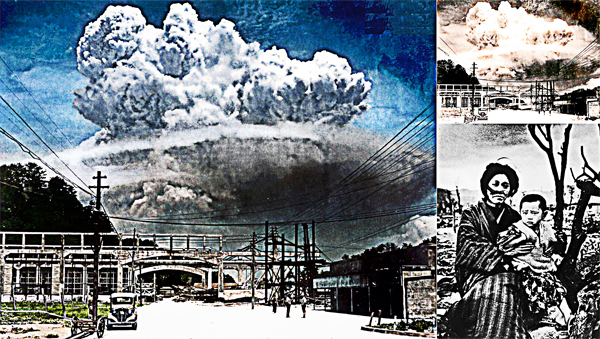
A B-29 named Bock’s Car took off from Tinian at 3:47 that morning. In its belly was Fat Man, and the atomic bomb was already armed. Major Charles W. Sweeney flew the plane, accompanied by the usual pilot, Captain Frederick C. Bock. The Enola Gay took part in the mission, flying weather reconnaissance.
Over Kokura, clouds and smoke from nearby bombing raids obscured visibility. The Americans could see parts of the city, but they could not site directly on the city arsenal that was their target. Sweeney flew overhead until Japanese antiaircraft fire and fighters made things “a little hairy”, and it was obvious that sighting would be impossible. He then headed for his secondary target: Nagasaki. In Kokura, meanwhile, civilians who had taken shelter after the air raid signal heard the all-clear, emerged, and breathed sighs of relief. None of them knew then, of course, how close they had come to dying.
Clouds also obscured visibility over Nagasaki, and Major Sweeney, running out of fuel, prepared to turn back toward Okinawa. At the last second a hole opened in the clouds, however, and Bombardier Captain Kermit K. Beahan announced that he could see his target. And so Fat Man began its journey, detonating over Nagasaki at 11:02 a.m. local time.
Fat Man detonated at an altitude of 1,650 feet over Nagasaki with a yield of 21 kilotons, about 40 percent more powerful than Little Boy had been. It did so almost directly above the Mitsubishi factories that were the city’s primary targets, rather than over the residential and business districts further south. Tens of thousands of civilians, especially children, had already been evacuated from the city. The series of hills bracing Nagasaki also somewhat confined the initial blast and restricted the damage.
Still, the impact was devastating, particularly because people had heard the all-clear after an earlier aircraft raid warning, and had left their shelters. Everything within a mile of ground zero was annihilated. Fourteen thousand homes burst into flames. People close to the blast were vaporized; those unlucky enough to be just outside that radius received horrific burns and, there and further out, radiation poisoning that would eventually kill them. Although estimates vary, perhaps 40,000 people were killed by the initial detonation. By the beginning of 1946, 30,000 more people were dead. And within the next five years, well over 100,000 deaths were directly attributable to the bombing of Nagasaki on August 9, 1945.
The National War WWII Museum / Wikipedia / Encyclopedia Britannica /
History Channel / U.S. Department Of Energy, The Manhattan Project - OSTI.gov / Atomic Heritage Foundation.org / National Archives.gov /
Search Films & Videos - Library Of Congress.gov / Truman Library.gov /
Atomic bombing of Nagasaki on August 09, 1945 (YouTube) 
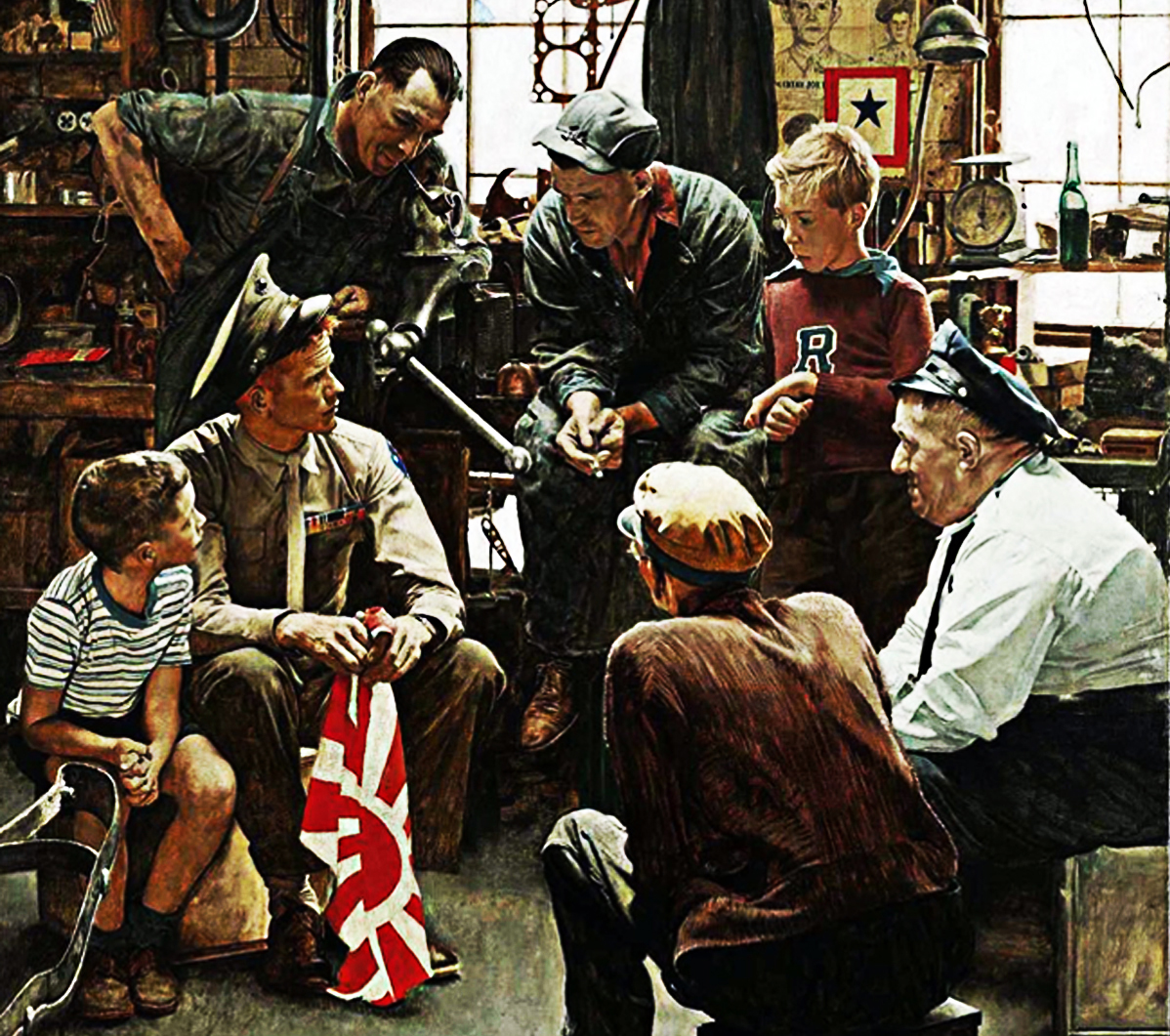
Understanding Military Terminology
Release Altitude
(DOD) Altitude of an aircraft above the ground at the time of ordnance release.
Joint Publications (JP 3-09.3) Close Air Support - Intelligence Resource Program
Relief In Place
(DOD) An operation in which, by direction of higher authority, all or part of a unit is replaced in an area by the incoming unit and the responsibilities of the replaced elements for the mission and the assigned zone of operations are transferred to the incoming unit.
Joint Publications (JP 3-07.3) Peace Operations - Intelligence Resource Program
Religious Advisement
(DOD) The practice of informing the commander on the impact of religion on joint operations to include, but not limited to: worship, rituals, customs, and practices of U.S. military personnel, international forces, and the indigenous population; as well as the impact of military operations on the religious and humanitarian dynamics in the operational area.
Joint Publications (JP 1-05) Religious Affairs in Joint Operations
Religious Affairs
(DOD) The combination of religious support and religious advisement.
Joint Publications (JP 1-05) Religious Affairs in Joint Operations
Religious Support
(DOD) Chaplain-facilitated free exercise of religion through worship, religious and pastoral counseling services, ceremonial honors for the fallen, crisis intervention, and advice to the commander on ethical and moral issues, and morale as affected by religion.
Also called RS.
See also Combatant Command Chaplain; Command Chaplain; Rreligious Support Team.
Joint Publications (JP 1-05) Religious Affairs in Joint Operations
Religious Support Team
(DOD) A team, comprised of at least one chaplain and one enlisted support person, that works together in designing, implementing, and executing the command religious program.
Also called RST.
See also Combatant Command Chaplain; Command Chaplain; Rreligious Support.
Joint Publications (JP 1-05) Religious Affairs in Joint Operations
Joint Publication - Department of Defense Dictionary of Military and Associated Terms
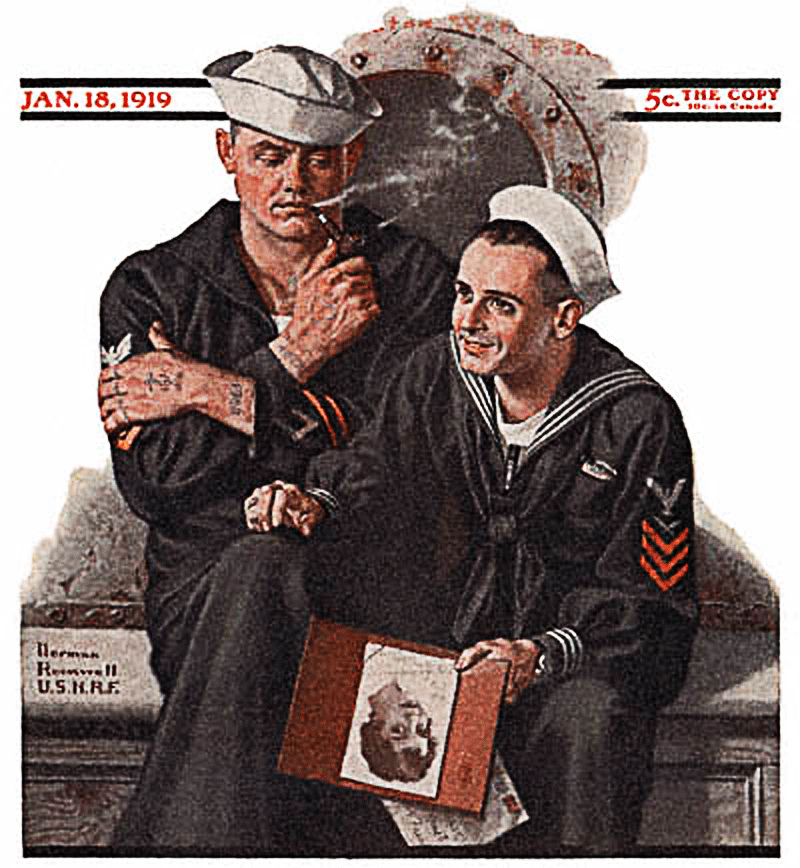
The Old Salt’s Corner

“Bury Me Not In The Deep Deep Sea”
“Oh bury me not in the deep deep sea.”
Those words came slow and faintly
From the pallid lips of a youth who lay,
In his cabin bunk at the close of day.
“Oh bury me not in the deep deep sea
Where the cold dark waves will swallow me,
Where no light shall break through the darkening waves,
And no sunbeam find my silent grave.”
He had mourned and pined till o'er his brow
Death's shades had slowly crept there now,
He wished his home and loved ones nigh
As the sailors gathered to see him die.
“Oh bury me where my mother's prayer,
And my sister's tears shall mingle there,
By my father's grave my grave shall be,
Oh bury me not in the deep deep sea.”
“Oh bury me not” - his voice failed there,
They paid no heed to his dying prayer
They lowered him down o'er the ship's dark side
And above him closed the dismal tide.
He had no costly winding sheet
To wrap around his head or feet,
They lowered him down where the billows roar
In the deep deep sea far from the shore.
A girl on shore many tears will shed
For him who lies on the ocean bed;
Where above his heart the whale will hiss,
And his pallid lips the fish will kiss.
~ Kenneth Peacock

“I’m Just Sayin”
“It is hard to imagine a more stupid or more dangerous way of making decisions than by putting those decisions in the hands of people who pay no price for being wrong.”
“There are few things more dishonorable than misleading the young.”
“You will never understand bureaucracies until you understand that for bureaucrats procedure is everything and outcomes are nothing.
“People who enjoy meetings should not be in charge of anything.”
“People who have time on their hands will inevitably waste the time of people who have work to do.”
“The most basic question is not what is best,
but who shall decide what is best.”
“Education is not merely neglected in many of our schools today,
“Talkers are usually more articulate than doers,
Since talk is their specialty.”
“The first lesson of economics is scarcity:
here is never enough of anything to fully satisfy all those who want it.
The first lesson of politics is to disregard the first lesson of economics.”
“Would you bet your paycheck on a weather forecast for tomorrow?
If not,
then why should this country bet billions on global warming predictions that have even less foundation?
“The old adage about giving a man a fish versus teaching him how to fish has been updated by a reader:
Give a man a fish and he will ask for tartar sauce and French fries!
Moreover,
some politician who wants his vote will declare all these things to be among his “basic rights”.”
~ Thomas Sowell

“Thought for the Day”
“The worst thing that happens to you may be the best thing for you if you don't let it get the best of you.”
“Too many people spend money they haven't earned to buy things they don't want to impress people they don't like.”
“The only difference between death and taxes is that death doesn't get worse every time Congress meets.”
“Make crime pay. Become a lawyer.”
“Be thankful we're not getting all the government we're paying for.”
“Good judgment comes from experience,
and a lot of that comes from bad judgment..”
“It isn't what we don't know that gives us trouble,
it's what we know that ain't so.”
“Everything is changing
People are taking their comedians seriously and the politicians as a joke.”
“Make crime pay.
Become a lawyer.”
“If you want to be successful,
it's just this simple.
Know what you are doing.
Love what you are doing.
And believe in what you are doing.”
“Don't gamble;
take all your savings and buy some good stock and hold it till it goes up,
then sell it.
If it don't go up,
don't buy it.”
~ Will Rogers

“What I Learned”
“Guests, like fish, begin to smell after three days.”
“An investment in knowledge pays the best interest.”
“Early to bed and early to rise makes a man healthy, wealthy and wise.”
“A place for everything, everything in its place.”
“If passion drives you, let reason hold the reins.”
“He that is good for making excuses is seldom good for anything else.”
“Any fool can criticize, condemn and complain - and most fools do.”
“He who falls in love with himself will have no rivals.”
“In this world nothing can be said to be certain,
except death and taxes.”
“Without freedom of thought,
there can be no such thing as wisdom -
and no such thing as public liberty without freedom of speech.”
“We must, indeed,
“all hang together or, most assuredly,
we shall all hang separately.”
“Be at war with your vices,
at peace with your neighbors,
and let every new year find you a better man.”
“Tell me and I forget.
Teach me and I remember.
Involve me and I learn.”
~ Benjamin Franklin
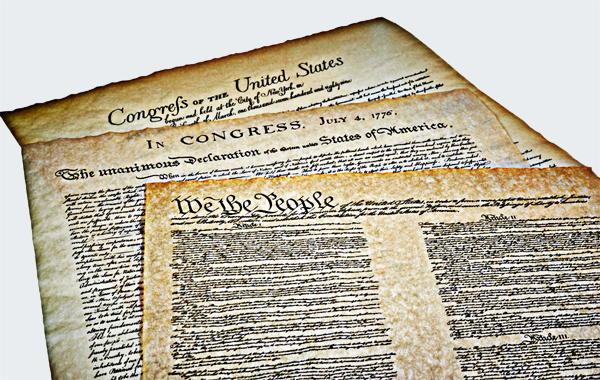
Mr. Answer Man Please Tell Us: What Was the Original Reason for the 25th Amendment?
The Twenty-fifth Amendment (Amendment XXV) to the United States Constitution deals with presidential succession and disability.
The amendment was submitted to the states on July 6, 1965, by the 89th Congress and was adopted on February 10, 1967, the day that the requisite number of states (38) had ratified it.
The 25th Amendment clears up some ambiguity about the temporary or permanent absence of the President from office and, if permanently disabled from office, provides for appointment of a Vice President.
It strengthens and clarifies the line of succession as well as provides for temporary inabilities to carry out Presidential duties, such as a President undergoing a medical procedure or operation.
SECTION 1: Presidential Succession
“In case of the removal of the President from office or of his death or resignation, the Vice President shall become President.”
SECTION 2: Vice Presidential Vacancy
“Whenever there is a vacancy in the office of the Vice President, the President shall nominate a Vice President who shall take office upon confirmation by a majority vote of both Houses of Congress.”
SECTION 3: President's Declaration Of Inability
“Whenever the President transmits to the President pro tempore of the Senate and the Speaker of the House of Representatives his written declaration that he is unable to discharge the powers and duties of his office, and until he transmits to them a written declaration to the contrary, such powers and duties shall be discharged by the Vice President as Acting President.”
SECTION 4: Declaration By Vice President And Cabinet Members Of President's Inability
“Whenever the Vice President and a majority of either the principal officers of the executive departments or of such other body as Congress may by law provide, transmit to the President pro tempore of the Senate and the Speaker of the House of Representatives their written declaration that the President is unable to discharge the powers and duties of his office, the Vice President shall immediately assume the powers and duties of the office as Acting President.”
“Thereafter, when the President transmits to the President pro tempore of the Senate and the Speaker of the House of Representatives his written declaration that no inability exists, he shall resume the powers and duties of his office unless the Vice President and a majority of either the principal officers of the executive department or of such other body as Congress may by law provide, transmit within four days to the President pro tempore of the Senate and the Speaker of the House of Representatives their written declaration that the President is unable to discharge the powers and duties of his office.”
“Thereupon Congress shall decide the issue, assembling within forty-eight hours for that purpose if not in session. If the Congress, within twenty-one days after receipt of the latter written declaration, or, if Congress is not in session, within twenty-one days after Congress is required to assemble, determines by two-thirds vote of both Houses that the President is unable to discharge the powers and duties of his office, the Vice President shall continue to discharge the same as Acting President; otherwise, the President shall resume the powers and duties of his office.”

A President could die in office - as has happened several times before - or be removed (impeached) and the original Constitution didn’t specify whether the Vice President was simply saddled with the duties of President or was elevated to the position of President. The 25th Amendment makes it clear that the VP becomes President.
Moreover, it also provides that the President may appoint a new Vice President to fill the vacancy in the Vice Presidential office, subject to confirmation and approval by Congress. This occurred after Richard Nixon resigned in 1974 and Vice President Gerald Ford assumed the Presidency, using his 25th Amendment power to appoint Nelson Rockefeller as Vice President.
If a President knows that he will be temporarily incapacitated for some reason, under the Amendment he notifies the leaders of both Congressional houses by written letter. He can specify when the transfer of power to his Vice President becomes effective in the letter too. Once he’s able to resume the duties of the office, he would then send letters to that effect to the same Congressional leaders. This would be the case if the President knew he was to be anesthetized for a medical procedure. Once he’s awake and recovering and his doctors believe he’s fit enough, he can “reclaim” his office.
The most interesting provision allows for the Vice President and a majority of either the principal officers of the executive departments (or of such other body as Congress may by law provide) to declare the president unable to discharge the powers and duties of his office by written declaration to the leaders of each Congressional house (i.e. the President pro tempore of the Senate and the Speaker of the House of Representatives).
Originally it was intended as a means to allow official transfer of power to the Vice President if the president became too injured or ill to sign such letters himself - think of a heart attack or stroke. This section allows the President to reclaim his office if he recovers. But this could also be invoked if a President exhibits signs of dementia or possibly “mental illness.” It also provides that if the President is removed under this section, if he attempts to reclaim the office, the same officers can object, in which case Congress will decide the matter (and you thought the IRS hearings were a circus!). It’s about the equivalent to having the President “relieved of his command” as military officers might do in the event a commander is unfit or unable to do his job.
The 25th Amendment doesn’t directly negate Article II, Section 1, Clause 6 of the Constitution (the old provisions) or the statutes enacted by Congress outlining the line of succession should both the President and Vice President be unable to fulfill their roles.
Constitution Daily.org
• Constitution Laws
• Ford Library Museum.gov
• Quora
• Wikipedia
• 25th Amendment (YouTube) 

NAVSPEAK aka U.S. Navy Slang
Aluminum Cloud: The F-14 Tomcat.
Already Broke: The USS Arliegh Burke
Anal Palace: The fast attack submarine USS Annapolis.
Anchors and Spurs: The famous dance club at NAVSTA San Diego where many a lonely Navy wife has broken the seventh commandment. Many sailors find this amusing until it happens to them. Also called “Cankers and Sores”.
Angles and Dangles (Submarine Service): (A Reference To) Placing a submarine at crazy angles and in crazy positions soon after leaving port, to see if anything breaks loose. Known as “at sea” by the surface Navy.
“Another Fine Navy Day!” An expression said (in a very cheery manner) on occasions when, in fact, it is not a Fine Navy Day at all. Compare “Living the dream!” in the civilian world.
Anymouse (adjective): Anonymous. Used to describe the safety system whereby sailors can drop anonymous recommendations into a locked box.
Wiktionary.org

Just for you MARINE
AMTRAC: Portmanteau for amphibious tractor, not to be confused with the railroad company Amtrak. Also referred to as “Tracks”.
ANGLICO: Air Naval Gunfire Liaison Company
Ant Farm: Area of an encampment where the radio antennae are emplaced.
Wikipedia.org

Naval Aviation Squadron Nicknames
Helicopter Maritime Strike Weapons School Atlantic - nicknamed the “Talons”
United States Navy - Naval Station Mayport, Naval Base and Naval Air Station Florida.
Wikipedia.org

Where Did That Saying Come From?
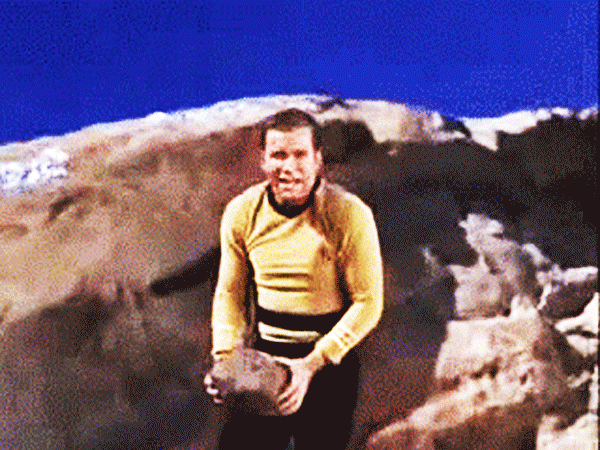
“A stone's throw:” Meaning: A short distance.
History: A stone's throw is, of course, literally the distance that a stone can be thrown, but has come to mean any short but undefined distance. Early English versions of the Bible refer to 'a stone's cast' with the same meaning, as in Luke 22:41, Wycliffe's Bible, 1526, for example:
“in nd he gat himself from them, about a stone's cast,”
'Stone's throw' was used in a non-biblical setting by the end of the 16th century. Arthur Hall's translation The Ten books of Homers Iliades, 1581, contains this line:
“For who can see a stones throw of ought thing in land or plaine?”
Stones hadn't then been established as the definitive objects to be thrown and the following year Nicholas Lichefield wrote:
“The enimyes were come, within the throwe of a Dart.”
No form of the phrase was much used and it wasn't until 1704 that Jonathan Swift revived it in The battle of the books:
“The two Cavaliers had now approach'd within a Throw of a Lance.”
The 'stone's throw' variant was established properly by John Arbuthnot in The History of John Bull, 1712, and, following that, there are many citations of the phrase.
“Mrs. Bull's condition was looked upon as desperate by all the men of art; but there were those that bragged they had an infallible ointment and plaister, which being applied to the sore, would cure it in a few days; at the same time they would give her a pill that would purge off all her bad humours, sweeten her blood, and rectify her disturbed imagination. In spite of all applications the patient grew worse every day; she stunk so, nobody durst come within a stone's throw of her, except those quacks who attended her close, and apprehended no danger.”
Phrases.org UK

Science & Technology

FEATURE: Study examines how DNA damage is repaired by antioxidant enzymes
• Warming climate could turn ocean plankton microbes into carbon emitters
Producing large, clean 2D materials made easy: Just “KISS”
• Neanderthal and human fire-making methods suggest different origins, shared intelligence
• Scientists' report world's first X-ray of a single atom
Scientists urge crackdown on methane emissions with only 13% regulated
• Topologically structured light detects the position of nano-objects with atomic resolution
• Self-healable and crack-resistant hydrogel microfibers inspired by spider silk
Dark cloud over ChatGPT revolution: the cost
• Phase I trial demonstrates first pharmacological treatment able to improve cardiac function in stiff-heart syndrome
• Machine-learning program reveals genes responsible for sex-specific differences in Alzheimer's disease progression
Phys.org / MedicalXpress / TechXplore
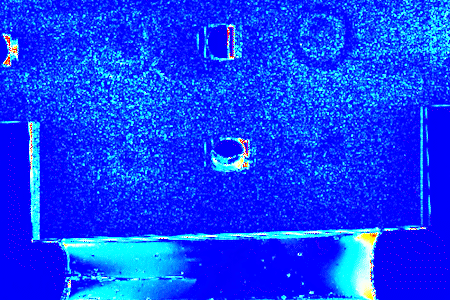
FEATURE: A conductive self-healing hydrogel to create flexible sensors
• An organic electrochemical transistor that serves as a sensor and processo
Black Hole Evaporation: Theoretical study proves Stephen Hawking partially correct
• Underwater forest's recovery offers hope for marine restoration across the globe
• Astrophysicists confirm the faintest galaxy ever seen in the early universe
Study tracks how adaptations to living in cold climate promoted social evolution in Asian colobine primates
• Study links post surgery mobility to favorable outcomes
• From genes to gestation, researchers probe predictive markers for pregnancy complications
How does the brain process memory during sleep? New study offers clues
• New research shows an uptick in weight loss surgery among youth in U.S.
• Cutting boards can produce microparticles when used to chop veggies, study shows
Phys.org / MedicalXpress / TechXplore

FEATURE: Population health study: Alcohol consumption increases the risks of over 60 diseases
• Team creates modular continuous robot based on origami-folded tubes
• UK hobbyist stuns math world with “amazing” new shapes
Campi Flegrei volcanoin southern Italy edges closer to possible eruption
• Recording the entire process of a tera-electron volt gamma-ray burst during the death of a massive star
• New study takes a high-level look at Nazca boobies' breeding
Ultrashort light pulses shaped like a spring toy bring a new twist to photonics
• Searching for new particle: Discovering axions could help answer one of the most puzzling questions in physics
• Scientists demonstrate 3D “bio-printing” inside organoids growing in hydrogels
Heat transport in energy materials: Study clarifies fundamental microscopic mechanisms
• Older folks found to foist more moist particles into the air
• Women feel the pain of losses more than men when faced with risky choices, according to new research
Phys.org / MedicalXpress / TechXplore

Bizarre News (we couldn’t make up stuff this good - real news story)
The Universe Is Rippling With A Faint “Gravitational Wave Background” Created By Colliding Black Holes, Huge International Study Suggests

A 15-year search reveals the first evidence of a cosmic “gravitational wave background” emitted by ancient, colliding black holes.
On June 29, five independent teams of radio astronomers published a series of papers presenting evidence that the universe is filled with gravitational waves created by colliding supermassive black holes
The North American, European, Indian, Chinese and Australian teams monitored rapidly spinning dead stars known as pulsars to gather information about the gravitational waves.
“The results presented today mark the beginning of a new journey into the Universe to unveil some of its unsolved mysteries”, Michael Keith a lecturer in astrophysics at the University of Manchester's Jodrell Bank Centre for Astrophysics and member of the European Pulsar Timing Array (EPTA), said in a statement.
Gravitational waves are ripples in the fabric of space-time that travel across the universe at the speed of light. Although Albert Einstein predicted their existence in 1916, it took almost a full century before the space-time vibrations were detected on Earth by the Laser Interferometer Gravitational-Wave Observatory (LIGO) collaboration in 2015.
Gravitational waves cause space to stretch and compress. By carefully measuring how objects in space change their positions relative to one another, scientists can infer the passing of a gravitational wave. LIGO monitored how the length of 2.5-mile-long (4 kilometers) tunnels changed by less than one-thousandth the size of a proton. Thanks to this engineering feat, the 2015 researchers detected gravitational waves produced by black holes that are tens of times as massive as the sun.
But to detect the low-frequency rumble of gravitational waves produced by supermassive black holes billions of times more massive than the sun requires a detector much larger than the size of Earth.

A Galactic-scale Gravitational Wave Detector
Astronomers measure how the distance between Earth and pulsars in the Milky Way changes because of gravitational waves that travel through our galaxy. This is known as a pulsar timing array.
Pulsars are remnants of supernova explosions: dying stars that collapse into highly magnetized and rapidly spinning neutron stars that continuously emit beams of electromagnetic radiation. The beams can sweep across space several hundred times per second. When some of them point toward Earth, they appear as highly regular radio pulses.
“Pulsars are excellent natural clocks”, David Champion, a scientist at the Max Planck Institute for Radio Astronomy and EPTA, said in the statement. “We use the incredible regularity of their signals to search for minute changes in their ticking to detect the subtle stretching and squeezing of space-time.”
British astronomer Jocelyn Bell Burnell observed the first pulsar in 1967. During the last 15 years, radio astronomers from the different teams have carefully monitored the pulses from a total of around 100 rapidly spinning pulsars.
“Pulsars are actually very faint radio sources, so we require thousands of hours a year on the world's largest telescopes to carry out this experiment”, said Maura McLaughlin a professor of physics and astronomy at West Virginia University and the North American Nanohertz Observatory for Gravitational Waves (NANOGrav), said in a separate statement.
Rather than detecting individual gravitational waves that pass through the Milky Way, the five different teams study the entire background of low-frequency gravitational waves that fill the cosmos. The slow oscillations in the distances between the pulsars and Earth are extremely tiny - on the order of one part in a thousand million million - and astronomers have to carefully model all possible sources of noise that also appear in their observations, including clouds of gas and dust that the radio pulses travel through, the motion of Earth through space, as well as the displacement of the telescopes due to the movement of the continents they stand on.
The 15-year-long cosmic hunt has finally revealed the first hints of the gravitational wave signal likely created by supermassive black holes. “When I saw the gravitational wave pattern emerge, I got butterflies”, Stephen Taylor from Vanderbilt University and chair of the NANOGrav collaboration said in a press briefing.

A Supermassive Origin?
Although the signal does not quite yet reach the golden standard for detection set by the scientific community, the astronomers feel confident that their result gives “compelling evidence” for a gravitational wave background likely produced by pairs of gigantic black holes.
Most galaxies have a gigantic black hole at their center (such as the Milky Way’s own Sagittarius A* and the distant M87* recently imaged by the Event Horizon Telescope).
These cosmic monsters have a mass ranging from a few hundreds thousand times the sun's mass to an astounding tens of billions times that of the sun. As galaxies collide, their gigantic black holes can come in the vicinity of one another. As they circle each other in a slow but incessant cosmic waltz, they emit the low-frequency gravitational waves that the astronomers have been searching for.
“Now we finally have strong evidence that many of these extremely massive and close binaries do exist. Once the two black holes get close enough to be seen by pulsar timing arrays, nothing can stop them from merging within just a few million years”, Luke Kelley, assistant adjunct professor of astronomy at University of California, Berkeley, and chair of NANOGrav's astrophysics group, said in a statement.
Intense physical processes that happened after the Big Bang could also contribute to the gravitational wave background. As the teams combine their data sets and continue their observations, they will investigate in more detail both the properties of the gigantic black hole pairs and maybe even the exotic physics in the early universe.
“Our combined data will be much more powerful”, said Taylor. “We're excited to discover what secrets they will reveal about our Universe.”
Related: “Runaway” black hole the size of 20 million suns caught speeding through space with a trail of newborn stars behind it
What happens at the center of a black hole?
First-ever close-up of a supermassive black hole sharpened by AI
Live Science (06/29/2023) 


SONG FACTS
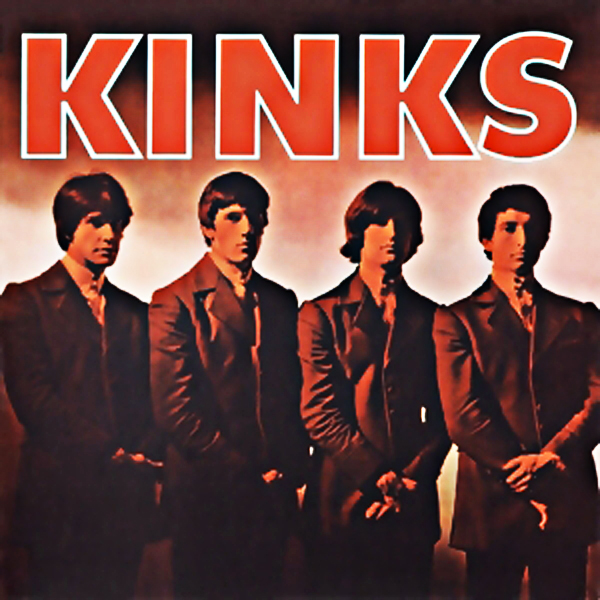
“You Really Got Me”  - The Kinks
- The Kinks
Album: Kinks
Released 1964 
The Kinks frontman Ray Davies wrote the lyric to this rambunctious rocker after watching girls dancing in a club. It's not the most articulate lyric, but that's the point:
The guy in the song is so infatuated, all he can do is mutter at the girl how she's really got him.
In 2015, he told Rolling Stone:
“I just remembered this one girl dancing. Sometimes you're so overwhelmed by the presence of another person and you can't put two words together.”
Davies expanded on the song's inspiration during a 2016 interview with Q magazine:
“I was playing a gig at a club in Piccadilly and there was a young girl in the audience who I really liked. She had beautiful lips. Thin, but not skinny. A bit similar to Françoise Hardy. Not long hair, but down to about there (points to shoulders). Long enough to put your hands through... (drifts off, wistfully)... long enough to hold. I wrote ‘You Really Got Me’ for her, even though I never met her.”
Dave Davies got the dirty guitar sound by slashing the speaker cone on his amplifier with a razor blade. The vibration of the fabric produced an effect known as “fuzz”, which became common as various electronic devices were invented to distort the sound. At the time, none of these devices existed, so Davies would mistreat his amp to get the desired sound, often kicking it.
According to Dave, the amp slashing happened in his bedroom in North London when he was irate - he had gotten his girlfriend, Sue Sheehan, pregnant, and their parents wanted to keep them from getting married. Instead of doing self harm, he used the blade on the amp to channel his rage. The amp was a cheap unit called an Elpico that had been giving him problems - he decided to teach it a lesson!
In the studio, the wounded Elpico was hooked into a another amp, which Dave recalls as a Vox AC30 and producer Shel Talmy remembers as a Vox AC10. The sound they got changed the course of rock history, becoming the first big hit to use distortion.
Davies and Sheehan stayed apart, but she had the baby, a girl named Tracey who finally met her father until 1993.
“You Really Got Me”  is the first hit for The Kinks. Before releasing it, they put out two singles that flopped:
is the first hit for The Kinks. Before releasing it, they put out two singles that flopped:
a cover of
“Long Tall Sally”  and a Ray Davis composition called
“You Still Want Me”
and a Ray Davis composition called
“You Still Want Me”  .
.
If
“You Really Got Me”  didn't sell, there was a good chance their record label would have dropped them, but the song gave them the hit they were looking for. Soon they were making TV appearances, gracing magazine covers, and playing on bills with The Beatles as an opening act. They didn't have an album out when the song took off, so they rushed one out to capitalize on the demand. This first, self-titled album has just five originals, with the rest being R&B covers - standard practice at the time for British Invasion bands.
didn't sell, there was a good chance their record label would have dropped them, but the song gave them the hit they were looking for. Soon they were making TV appearances, gracing magazine covers, and playing on bills with The Beatles as an opening act. They didn't have an album out when the song took off, so they rushed one out to capitalize on the demand. This first, self-titled album has just five originals, with the rest being R&B covers - standard practice at the time for British Invasion bands.
The Kinks recorded a slower version with a blues feel on their first attempt, but hated the results. Ray Davies thought it came out clean and sterile, when he wanted it to capture the energy of their live shows. Dave Davies' girlfriend backed them up, saying it didn't make her want to “drop her knickers”.
The Kinks' record company had no interest in letting them re-record the song, but due to a technicality in their contract, they were able to withhold the song until they could do it again. At the second session, Dave Davies used his slashed amp and Talmy produced it to get the desired live sound. This is the version that was released. Talmy liked the original: He claimed it would also have been a hit if it was released.
Ray Davies came up with famous riff on the piano at the family home. He played it for Dave, who transposed it to guitar. Their first version was 6-minutes long, but the final single release came in at just 2:20.
The first line was originally “you, you really got me going”. Ray Davies changed it to “girl, you really got me going” at the suggestion of one of their advisers. The idea was to appeal to the teenage girls in their audience.
The final version of the song was recorded in July 1964, with Ray Davies on lead vocals, Dave Davies on guitar, and Pete Quaife on bass.
The Kinks didn't have a drummer when they first recorded the song a month earlier, so producer Shel Talmy brought in a session musician named Bobby Graham to play. When they recorded it the second time in July, Mick Avory had joined the band as their drummer, but Talmy didn't trust him and made him play tambourine while Graham played drums. A session musician named Arthur Greenslade played piano, and Jon Lord, years before he became a member of Deep Purple, claimed he played keyboards. Lord recalled with a laugh to The Leicester Mercury in 2000: “All I did was plink, plink, plink. It wasn't hard”.
Released in the UK on August 4, 1964,
“You Really Got Me”  climbed to #1 on September 16, where it stayed for two weeks. In America, it was released in September and reached a peak of #7 in November.
climbed to #1 on September 16, where it stayed for two weeks. In America, it was released in September and reached a peak of #7 in November.
Ray Davies is the only songwriter credited on this track, even though his brother Dave came up with the signature guitar sound. This was one of many friction points for the brothers, who are near the top of any list of the most combative siblings in rock. When they recorded the song, Ray was 22 and Dave was 17.
Ray Davies wrote this with the intention of making it big crowd-pleaser for their live shows. He was trying to write something similar to
Louie Louie”  ,
which was a big hit for The Kingsmen.
,
which was a big hit for The Kingsmen.
Shel Talmy, who produced this track, came to England from California and brought many American recording techniques with him. To get the loud guitar sound on “You Really Got Me”, he recorded the guitar on two channels, one with distortion, the other without. When combined in the mix, the result was a loud, gritty sound that popped when it came on the radio.
“I was using some techniques I worked out on how to get a raunchier sound with distortion”, Talmy said in a Songfacts interview. “It wasn't that difficult because I had done it before in America.”
Talmy added: “It helped that Dave was as good as he was, and that he was quite happy to listen.”/p>
Talmy later produced the first album for The Who,
My Generation” 
It was rumored that Jimmy Page, who was a session musician at the time, played guitar on this track, which the band stridently denied. According to producer Shel Talmy, Page didn't play on this song but did play rhythm guitar on some album tracks because Ray Davies didn't want to sing and play guitar at the same time.
Ray Davies took pains to make sure we could understand the words.
“I made a conscious effort to make my voice sound pure and I sang the words as clearly as the music would allow”, he said.
A 1978 cover of this song was the first single for Van Halen, who played lots of Kinks songs in their early years doing club shows. Eddie Van Halen spent the next several years developing new guitar riffs, and like Davies, was known to manipulate his equipment to get just the right sound.
The powerful rhythm guitar riff was very influential on other British groups. The Rolling Stones recorded
“Satisfaction”  ,
which was driven by the rhythm guitar, a year later.
,
which was driven by the rhythm guitar, a year later.
According to Ray Davies, there was a great deal of jealousy among their peers when The Kinks came up with this song. He said in a 1981 interview with Creem:
“There were a lot of groups going around at the time - The Yardbirds, The Kinks, The Rolling Stones - and nobody had really cracked with a sort of R&B #1 record.
The songs were always sort of like The Beatles. When we first wanted to do a record, we couldn't get a recording gig. We were turned down by Decca, Parlophone, EMI and even Brian Epstein came to see us play and turned us down. So I started writing songs like ‘You Really Got Me’, and I think there was a sheer jealousy that we did it first.
Because we weren't a great group – untidy – and we were considered maybe a bit of a joke. But for some reason, I'd just had dinner, shepherd's pie, at my sister's house, and I sat down at the piano and played da, da, da, da, da. The funny thing is it was influenced by Mose Allison more than anybody else. And I think there was a lot of bad feeling. I remember we went to clubs like the Marquee, and those bands wouldn't talk to us because we did it first.”
The Kinks' next single was
“All Day And All Of The Night”  ,
which was basically a re-write of this song, but was also a hit.
,
which was basically a re-write of this song, but was also a hit.
This has been used in these TV shows:
The Simpsons (“The Canine Mutiny” - 1997)
Mad Men (“The Other Woman” - 2012)
Shameless (“Hurricane Monica” - 2012)
Blue Bloods (“Model Behavior” - 2011)
Daria (“Legends of the Mall” - 2000)
WKRP in Cincinnati (“Frog Story” - 1981)
These movies:
“Minions” (2015)
“Alvin and the Chipmunks: The Squeakquel” (2009)
“Catch Me If You Can” (2002)
“The New Guy” (2002)
“Hilary and Jackie” (1998)
“Private Parts” (1997)
“A Bronx Tale” (1993)
“She's Out of Control” (1989)
“Night Shift” (1982)
“Over the Edge” (1979)
And in the video game “Guitar Hero II” (2006).
Ray Davies recalled in an interview with NME how his brother Dave created the distortion effect on this song. Said Ray:
“We stuck knitting needles in the speakers, or in Dave's case, he slit the speakers with a razor blade. In those days we played records on a radiogram so loudly that they all sounded fuzzy. We thought, 'That's a great sound,' without realizing the speakers were buggered. Everyone else was using really clean guitar sounds, so for ‘You Really Got Me’ we hooked a little speaker up to a clean amp and came up with thunderous, unaffected, pure power.”
In a Rolling Stone interview, Ray said that they “evolved” the sound by putting knitting needles in the speakers when recording this song. That statement prompted a rebuttal from his brother Dave, who wrote in to explain:
“I alone created the guitar sound for the song with my Elpico amp that I bought. I slashed the speaker with a razor blade, which resulted in the ‘You Really Got Me’ tone. There were no knitting needles used in making my guitar sound.”
One of the many things the Davies brothers disagree on is the Van Halen cover. Ray loves it. He told NME it is his favorite Kinks cover.
“It was a big hit for them and put them on a career of excess and sent them on the road. So I enjoyed that one.”
Dave Davies is not a fan. He told Rolling Stone:
“Our song was working-class people trying to fight back. Their version sounds too easy.”
The Who played this at many of their early concerts. Their first single was
“I Can't Explain”  ,
also produced by Shel Talmy with a sound clearly borrowed from
“You Really Got Me”
,
also produced by Shel Talmy with a sound clearly borrowed from
“You Really Got Me”  ,
as Pete Townshend played a dirty guitar riff similar to what Dave Davies' did.
,
as Pete Townshend played a dirty guitar riff similar to what Dave Davies' did.
MORE SONGS
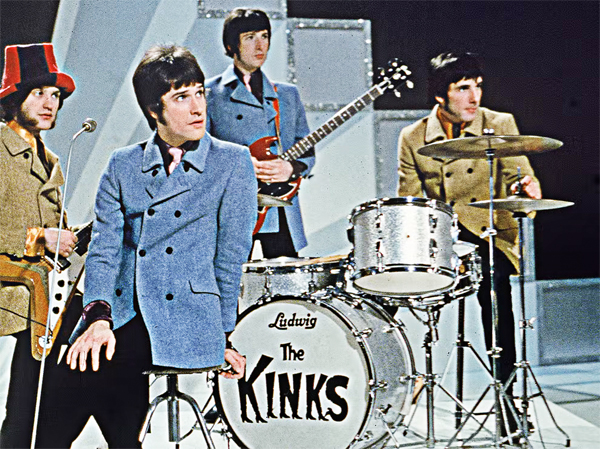
1964
“You Really Got Me”  Live
Live  Video
Video 
“All Day and All of the Night”  Live
Live  Video
Video 
1965
“A Well Respected Man”  Live
Live  Video
Video 
“Set Me Free”  Live
Live  Video
Video 
“Tired of Waiting for You”  Live
Live  Video
Video 
1966
“Sunny Afternoonn”  Live
Live  Video
Video 
“You Really Got Me” - The Kinks 1964 Continued ...
The Kinks official site (The Kinks Discography) / Rock & Roll Hall of Fame / Billboard / All Music / Song Facts /
Ultimate Classic Rock / The Kinks
Image: “Kinks (album)” by The Kinks

Trivia
● Whose treasure is said to be the subject of the “Treasure Island” map?
Answer to Trivia
READ MORE: Study.com
● Which farm animal has the largest eyes of any land mammal?
Answer to Trivia
READ MORE: Equamore Foundation.org
● Mary Read and Anne Bonny had what job in common?
Answer to Trivia
READ MORE: History Extra
● What is the flattest continent?
Answer to Trivia
READ MORE: Nations Online.org

A Test for People Who Know Everything
From the Jeopardy Archives Category - “WORD WORDS” ($200)
“Add ‘Y’ to the kind of clock with hands & numbers to get this type of comparison.”
Answer to Jeopardy READ MORE: Wikipedia
From the Jeopardy Archives Category - “WORD WORDS” ($400)
“An idioticon is a dictionary of this ‘D’ word, a form of a language spoken in a particular region.”
Answer to Jeopardy READ MORE: Wikipedia
From the Jeopardy Archives Category - “WORD WORDS” ($600)
“To talk without preparation is to ad-lib or to speak this ‘sleeve-oriented’ way.”
Answer to Jeopardy READ MORE: Cambridge Dictionary.org
From the Jeopardy Archives Category - “WORD WORDS” ($800)
“It's a dramatic monologue or speech made to oneself.”
Answer to Jeopardy READ MORE: Wikipedia
From the Jeopardy Archives Category - “WORD WORDS” ($1,000)
“Lapsus linguae is literally Latin for this kind of mistake.”
Answer to Jeopardy READ MORE: Cambridge Dictionary.org

Joke of the Day

A Guy Walks Into A Bar
A guy walks into a bar, orders a beer and says to the bartender, “Hey, I got this great Polish Joke...”
The barkeep glares at him and says in a warning tone of voice:
“Before you go telling that joke you better know that I'm Polish, both bouncers are Polish and so are most of my customers”
“Okay” says the customer, “I'll tell it very slowly.”

































